#mary-anne cardinal
Text
Title: Burn the Midnight Oil
Rated: R
Chapters: 5/?
Wolsey
Mary
Jane Rochford
Henry
Anne
Word Count: 3,301
Summary:
“Master Secretary doesn’t deal with bed hangings.”
“Master Secretary deals with everything.”
“That’s what my Uncle Norfolk says.”
—a Wolf Hall deleted scene
A/N:
I couldn’t stop thinking about the fact that Rylance!Cromwell has intense chemistry with most of the people he shares a scene with, so naturally I decided to write a fic where is the fandom bicycle. Ships are tagged in order of appearance. Not all tags apply to all chapters.
#wolf hall#thomas cromwell#cardinal wolsey#mary boleyn#jane rochford#henry viii#anne boleyn#op#my fic
13 notes
·
View notes
Text
Anne of Austria and Mazarin: a more nuanced reading.
The question of the queen mother’s relationship with Mazarin has been the stuff of historical speculation since the mazarinades first spread notions of illicit sexual relations, secret marriage, and the cardinal’s ‘bewitching’ of the queen. Since then, slightly more decorous historical discussion has sought to establish the nature of the relationship, with the obvious underlying question of how emotionally dependent Anne was on Mazarin. Much of this relies on reading meanings into letters from Mazarin to Anne whose tone and expression could encompass the possibilities of frustrated physical passion, heightened seventeenth-century notions of sentiment and friendship, calculated emotional manipulation, and a great deal in between these three. The relevant question in this context is whether the queen mother could contemplate abandoning Mazarin and leaving him in permanent exile, either because the emotional ties were less strong than Mazarin wished to believe, or because Anne calculated, on behalf of her son, that the political price —or political risk— of restoring the cardinal was too high. Here the only real source, given the queen’s own silence, are the memoirs of contemporaries around her at court, and opinions in these are divided. If some of these writers assert that Anne would never abandon Mazarin, others were quite prepared to argue that the queen’s affections were conditional and perceptibly diminishing as Mazarin’s absence continued. A third group did not doubt Anne’s affection for the cardinal, but were more sceptical of her resolution and commitment to him in the face of persuasion and contrary arguments advanced by those in her entourage and in the council.
Some of the shrewdest commentary can be found in the memoirs of Marie d’Orléans, duchesse de Nemours, who was not an intimate of Anne like Mme de Motteville, but no enemy of the queen either. Nemours’ memoirs assert that commentators had been so obsessed with the notion that the queen was entirely controlled by Mazarin that they had failed to note just how little correspondence there was between the two of them, and the amount of mutual misunderstanding that grew up during Mazarin’s exile. The queen mother, she argued, had little taste for the work of government and little confidence that she could handle it well; despite this, Nemours adds, she had a good sense of political judgement based on scepticism about the motives of everyone. So it suited the queen to allow Mazarin to take responsibility for government, but when he was not present she was prepared to take the advice of others around her, even when this cut across the actions and policies that she had previously agreed with the cardinal. This interpretation of the queen’s motivation was not good news for Mazarin’s aim to shape Anne’s actions on the basis of his intermittent correspondence. And it was echoed by two of Mazarin’s strongest advocates at court: his nephew by marriage, the duc de Mercoeur, and his military ally, the maréchal du Plessis-Praslin. Both stressed that the queen was, in Mercoeur’s words, ‘susceptible to being pressured’ by those ministers and courtiers with whom she was more immediately in contact.
These pessimistic judgements were not fully accepted by Mazarin, but he was certainly concerned that Anne might get used to managing affairs of state without him. It was not possible to insulate the queen mother from those around her, and many of them were either his undeclared enemies or those who believed that Mazarin’s return would complicate an already precarious political situation. His response, as we have seen, was to keep his return as the unremitting focus of all his letters, while simultaneously expecting his allies and appointees in the council and at court to maintain the pressure on the queen by stressing the miseries of his exile and the benefits that would be brought by his presence.
All of this took its toll: Mazarin was prepared to confront the queen directly about the extent of her commitment to him, and his replies suggest that he received some written reassurances from Anne in return. But he was no less aware that even the most detailed and painstakingly written account of the political situation and the role she should play was less immediately influential than direct conversation with the queen. Unless he could count on those around Anne to remain ‘on message’, his letters could easily be forgotten; and many of these courtiers saw Mazarin’s stock as having fallen to the point where his concerns could be ignored with impunity. An additional hazard in trying to build up a group of cheerleaders around the queen came from Anne’s suspicions that Mazarin’s letters to others in the court circle may have offered different perspectives and information from those sent to her personally. The duc de Mercoeur explained in a letter to Mazarin that the queen insisted that all those at the court who received letters from Mazarin should read them out to her in her apartments. Mercoeur recognized that this had the potential to embarrass Mazarin, if not worse, and suggested that the cardinal should send information that he did not want disclosed to the queen in separate, additional notes that could be kept apart from the letter for public consumption.
David Parrott - 1652: The Cardinal, the Prince, and the Crisis of the Fronde
#xvii#david parrott#1652: the cardinal the prince and the crisis of the fronde#cardinal mazarin#anne d'autriche#marie d'orléans#madame de motteville#duc de mercoeur#maréchal du plessis-praslin
3 notes
·
View notes
Text
Our Shadows Have Claws - Yamile Saied Méndez (Editor), Amparo Ortiz (Editor)
Chantel Acevedo, Ricardo López Ortiz (Illustrations), Courtney Alameda, David Bowles, Ann Dávila Cardinal, Mia Garcia, Gabriela Martins, Racquel Marie, Tehlor Kay Mejia, Maika Moulite, Maritza Moulite, Claribel A. Ortega, Lilliam Rivera, Jenny Torres Sanchez, Alexandra Villasante, Ari Tison

From zombies to cannibals to death incarnate, this cross-genre anthology offers something for every monster lover. In Our Shadows Have Claws, bloodthirsty vampires are hunted by a quick-witted slayer; children are stolen from their beds by “el viejo de la bolsa” while a military dictatorship steals their parents; and anyone you love, absolutely anyone, might be a shapeshifter waiting to hunt.
The worlds of these stories are dark but also magical ones, where a ghost-witch can make your cheating boyfriend pay, bullies are brought to their knees by vicious wolf-gods, a jar of fireflies can protect you from the reality-warping magic of a bruja—and maybe you’ll even live long enough to tell the tale. Set across Latin America and its diaspora, this collection offers bold, imaginative stories of oppression, grief, sisterhood, first love, and empowerment.
#our shadows have claws#yamile saied mendez#amparo ortiz#chantel acevedo#ricardo lopez ortiz#courtney alameda#david bowles#ann davila cardinal#mia garcia#gabriela martins#racquel marie#tehlor kay mejia#maika moulite#maritza moulite#caribel a ortega#lilliam rivera#jenny torres sanchez#alexandra villasante#ari tison#Algonquin Young Readers#september 6 2022#poc#latin american
5 notes
·
View notes
Text
Spoilers for RDR2 below!!!:
I was visiting Kieran's grave the other day and there were light blue flowers not far away and they reminded me a lot of him it was crazy so I decided to make a list of flowers that remind me of all the rdr2 characters
Kieran Duffy: Tweedia/Forget-me-not
Lenny Summers: Lantana
Hosea Mathews: Dasiy
Arthur Morgan: Poppy
Javier Escuella: Rose
Dutch Van Der Linde: Red hibiscus from Tahiti
Molly O' Shea: Honey Suckle
Sean McGuire: Dandelion
Susan Grimshaw: Red Tiger Lily
Sadie Adler: Sunflower
Charles Smith: Plume Thistle
Reverend Swanson: Queen Anne's Lace
Josiah Trelawney: Bleeding Heart
Jack Marston: Lilly of the Valley
John Marston: Violet
Karen Jones: Lily
Abigail Marston: Columbine
Mary-Beth Gaskill: Daffodil
Tilly Jackson: Lavender
Simon Pearson: Sea Thrift
Bill Williamson: Yarrow
Uncle: Cardinal Flower
Micah Bell: no flower only rat
#hope you enjoy ig?#i hope i got everyone#I ALMOST FIRGOT TRELAWNEY#there#rdr2 spoilers#rdr2#red dead redemption 2#kieran duffy#lenny summers#hosea matthews#dutch van der linde#arthur morgan#sean mcguire#javier escuella#susan grimshaw#sadie adler#charles smith#reverend swanson#josiah trelawny#jack marston#john marston#karen jones#abigail marston#mary beth gaskill#tilly jackson#simon pearson#bill williamson#uncle rdr2#does he have a name???#micah bell
124 notes
·
View notes
Text
Ok Anne and Mary R concept that has absolutely no basis in cannon and is committing the cardinal sin of pulling historical facts when convenient.
So basically the concept is: Hornigold era. Anne is MTF and Mary is dressing as a man and going by Mark so as not to be the only woman in the Ben Hornigold toxic masculinity boot camp. They both come out to each other as women at the same time and then immediately misunderstand what the other is saying as the same thing that they've got going on.
77 notes
·
View notes
Text




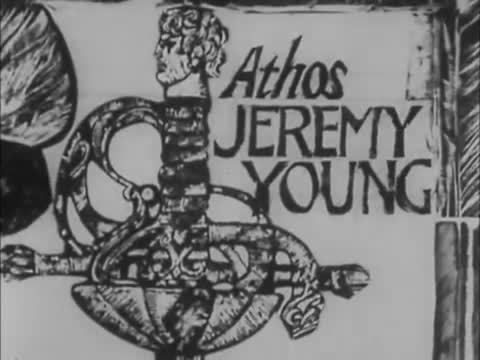
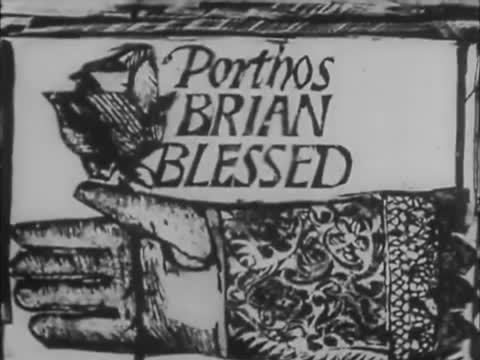


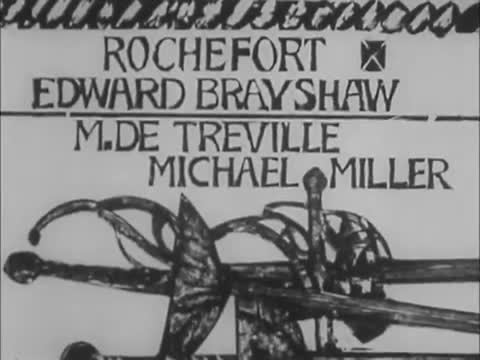
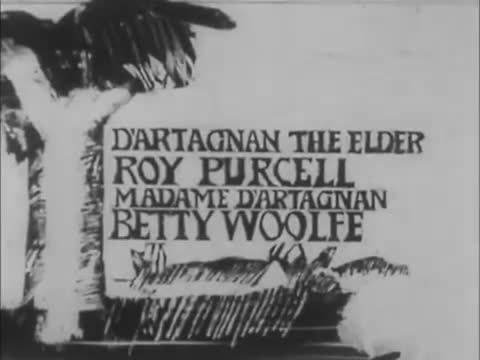

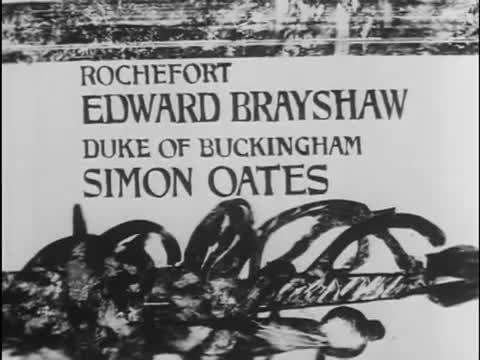
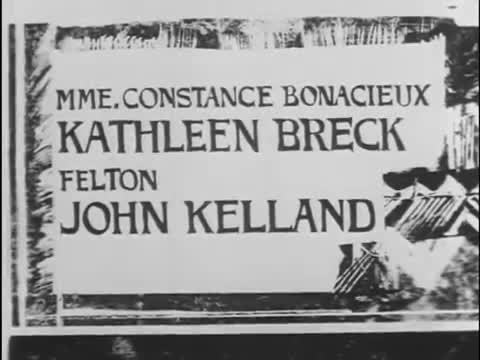



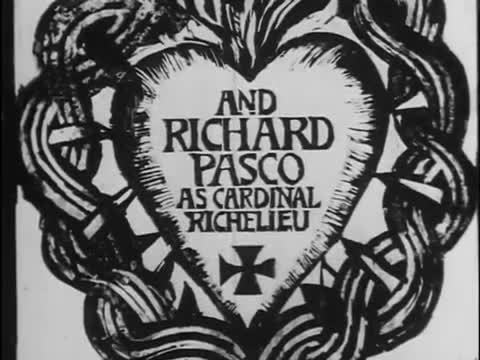

The Three Musketeers - BBC - November 13, 1966 - January 15, 1967
Drama (10 episodes)
Running Time: 30 minutes
Stars:
Jeremy Brett as D'Artagnan
Brian Blessed as Porthos
Jeremy Young as Athos
Gary Watson as Aramis
Mary Peach as Milady de Winter
Patrick Holt as Lord de Winter
Richard Pasco as Cardinal Richelieu
Edward Brayshaw as Rochefort
Billy Hamon as Planchet
Milton Johns as Grimaud
Kathleen Breck as Madame Constance Bonacieux
Michael Miller as M. de Treville
Simon Oates as Duke of Buckingham
Carole Potter as Anne of Austria
#The Three Musketeers#TV#BBC#Drama#1960's#Jeremy Brett#Brian Blessed#Jeremy Young#Gary Watson#Mary Peach
107 notes
·
View notes
Text
The Painted Hall, Greenwich

During the king’s coronation I visited Greenwich's "Painted Hall." This series of rooms depict scenes relating to the success of British Protestantism and the beginning of burgeoning imperial expansion. Following the vital English naval victory over France at La Hougue in 1692, Queen Mary ordered that a hospital be built for retired seamen, in keeping with the existing hospital for former soldiers at Chelsea.
While Mary died before its completion her husband, William III, saw the projected through. Sir Christopher Wren (of St Paul’s fame) and his assistant, Nicholas Hawksmoor, designed a grand series of buildings at Greenwich, in London.
The Royal Hospital at Greenwich acted as a retirement home for sailors between the 1700s and late 1900s. And at its heart is the Painted Hall, a series of rooms where a relatively unknown artist, James Thornhill, was commissioned to paint scenes of British-Protestant triumph.
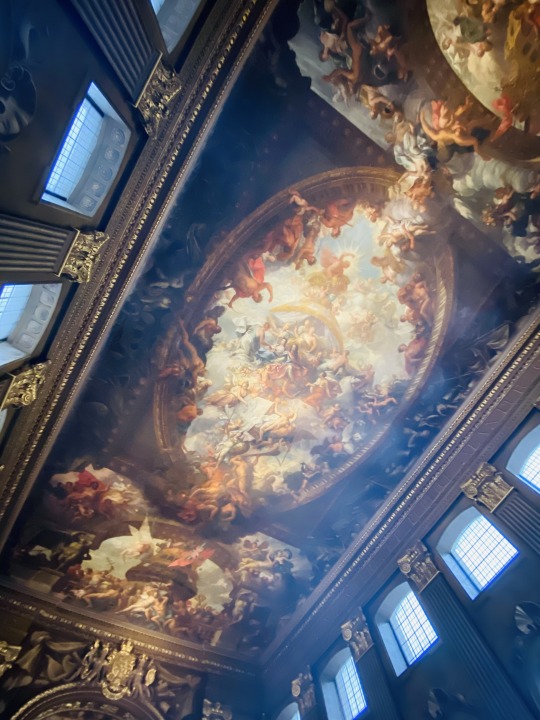
At the centre is King William III and Queen Mary shown overseeing ‘The Triumph of Peace and Liberty over Tyranny.’ Immediately above the couple and to their left is the allegorical figure of Prudence holding a mirror, one of the four Cardinal Virtues.

To her right are Providence and Concord, while to her left is Justice. Beneath Justice is a woman representing Europe, who is accepting the ‘cap of liberty,’ the ancient red Phrygian cap, from William, who in turn is accepting an olive branch from ‘Peace.’

Beneath William’s foot is the defeated Louis XIV of France with a broken sword, and a tumbling, discarded papal crown. Beneath them the ‘Spirit of Architecture’ along with Truth and Time are overseeing plans showing the actual construction of the hospital.
Above it all, Apollo rides his chariot, while the signs of the zodiac are arrayed around the edges. At the bottom, Pallas Athena and Hercules crush the Hydra and the Gorgon, ‘expelling the Vices from the Kingdom of William and Mary.’

Another section of the ceiling shows a captured Spanish galley laden with the spoils of war, a reference to the British capture of Gibraltar in 1704. Diana, Goddess of the moon, passes mastery of the tides over to British sailors. Beneath them are representations of the English rivers Avon, Severn and Humber.
To the left and the right, scientific advancement is celebrated by the presence of astronomers Tycho Brahe, John Flamsteed, Copernicus and Newton’s ‘Principia.’ The gods Neptune and Cybele oversee it all.
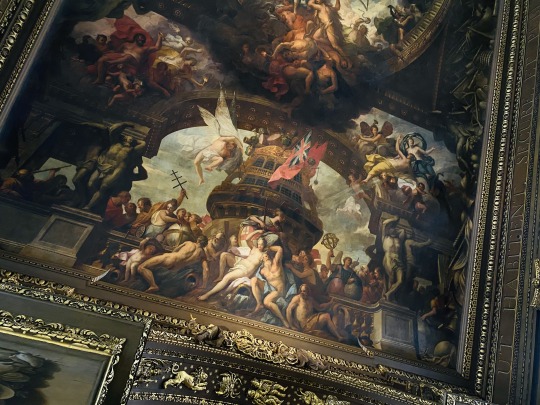
The next section of the ceiling shows HMS Blenheim being filled with the spoils of war by the winged figure of Victory. Beneath are more river representations along with the City of London and figures representing navigation and astronomy. On the left is Galileo, while Zeus and Juno watch from above.

The painted hall took decades to complete, and saw further dynastic change, as George I, originally of Hanover, became king after William III’s successor, Queen Anne, died. George maintained the Protestant ascendancy, as portrayed in the upper hall chamber adjoining the main hall.
Here we see George I, his wife Sophia of Hanover and their children and grandchildren beneath St Paul’s, overseen the a figure representing “the Golden Age” with overflowing cornucopia. The artist, James Thornhill, added himself on the right.
Over them is an inscription quoting Virgil's Eclogues, which translates as ‘a new generation has descended from the heavens.’
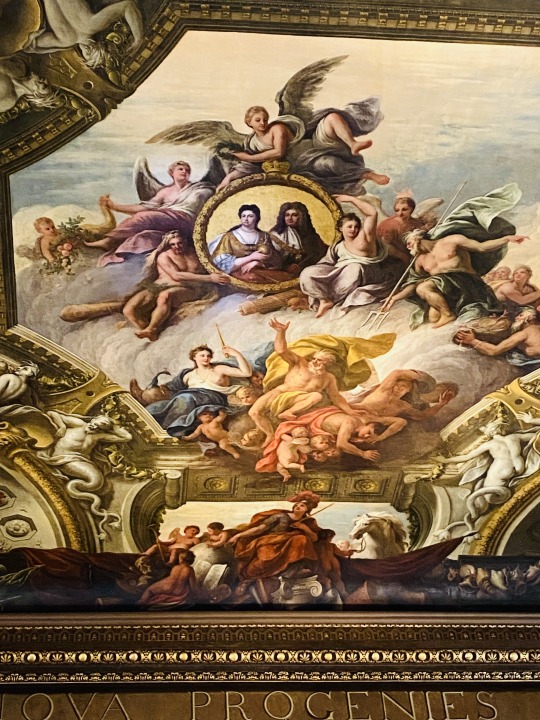
On the left of the upper hall is a depiction of William III’s arrival in England at the start of the Glorious Revolution in 1688, while George I is shown arriving on the opposite side of the hall (rather unrealistically in a chariot) in 1714.
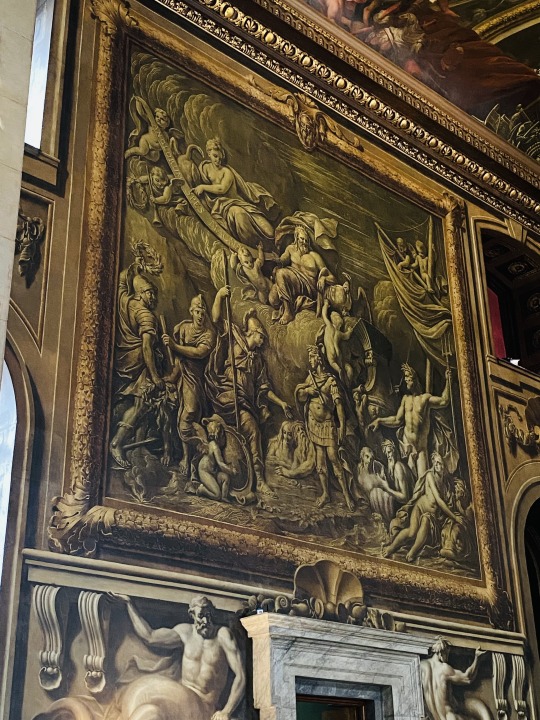
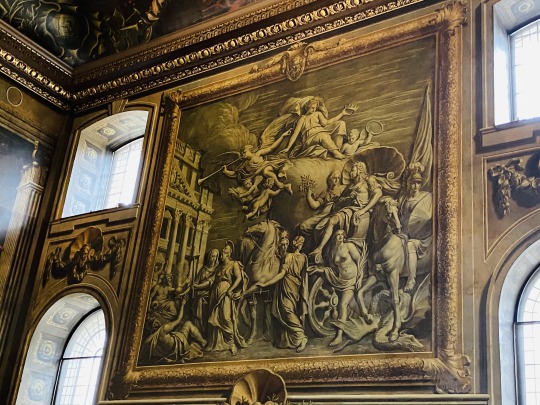
#painted hall#the painted hall#greenwich#history#british history#art#art history#william iii#william of orange#william and mary#george i#queen anne#17th century#18th century
132 notes
·
View notes
Text
I'm reading Pride and Protest by Nikki Payne, a modern retelling of Pride and Prejudice and I'm struggling.
I actually find what Payne has done with the characters and setting really interesting and there are some touches I really like, especially turning Mary into Maurice - an "activist" who changes his activism regularly and lectures others on what they should be doing. (Any interpretation of Mary that isn't "misunderstood, shy, nerd girl who isn't-like-other-girls and is actually just like me, a misunderstood, shy, over-looked nerd girl" gets a positive vote from me.)
However, I really very much dislike her interpretation of Darcy (Dorsey) and Elizabeth (Liza)'s relationship and that is... kinda crucial!
It's waaaaaay over sexualised. Like, I get this is a romance book, but, like, I'm reading along enjoying the story and plot and then suddenly Dorsey is thinking about burying himself in Liza's breasts and I'm like "wooaah!" It's like it's impossible for the author to show them having feelings for each other without it being explicit and I find that out of place both with the source material and with the rest of the narrative.
Secondly, it is sexual... immediately. It commits the cardinal sin of saying "Darcy and Lizzy were hot for each other from the start and all the tension is ~ s e x u a l tension". The 2005 abomination does this too with the near kiss in the rain. And pretty much every single P&P inspired enemies-to-lovers narrative out there does it too. The problem is... this is a really, really inaccurate interpretation of the original book. Darcy is, admittedly, attracted to Elizabeth very quickly. Something that he manages to show not at all to anybody. Only Caroline Bingley, who is intensely interested in Darcy's romantic feelings, spots it. Later on, arch observer Charlotte and good friend Col Fitz also suspect something but by this point in Rosings Darcy has given into his feelings and is trying, albeit terribly, to court Elizabeth. Not that she notices. Darcy is completely able to conceal his sexual attraction to Elizabeth from everyone who isn't thinking about Darcy sexually. He is not quite so able to conceal his romantic interest later on. But crucially, at no point does Elizabeth notice a thing. She has LITERALLY NO IDEA. This is because Elizabeth has no concept of Darcy as a romantic prospect for her at all. She laughs at thinking what a good match he'd be for Anne de Bourgh, a probably sexless in appearance invalid. She doesn't hate him in a ~sexy~ way, she just really does not like him and does not consider him as a romantic option.
If Elizabeth is aware that Darcy has the hots for her, this changes the dynamic completely. If she is actually attracted to him in the first part of the story, that changes the dynamic completely. And both of these changes alter and potentially cheapen Elizabeth's character. If she is aware on some level that Darcy likes her and is interested in her, then she ends up looking like an idiot when the first proposal comes around. Or she ends up looking coy and like she is actually flirting with him. Yes, there is banter but Elizabeth is not consciously flirting or trying to attract him! Elizabeth spends the whole first part of the novel with a crush on Wickham. Austen is perfectly capable to showing to the audience without needing modern explicit language that a character has the hots for another character. Elizabeth fancies Wickham, not Darcy! As the meme goes, Darcy and Elizabeth are experiencing two very different kinds of tension! That's part of the comedy. And if Elizabeth is aware that she is attracted to Darcy, it just becomes a different story, and a less interesting one. Elizabeth becomes yet another romance novel heroine who likes the "bad boy" and tries to persuade herself not to, until the tension is sooooo strong and she ~snaps.
But one of the major points is that Elizabeth doesn't like bad boys! She falls for (well, crushes on) Wickham because she thinks he's good. She dislikes Darcy because she thinks he's bad. She only starts to consider Darcy positively when she understands and sees for herself the truth of his character. That is what she finds attractive, not him being a buttoned up jerk! "One has all the goodness, the other all the appearance of it." That is central to P&P's story and its message.
Unfortunately, in the aims of writing a "romance" novel, Pride and Protest gives us heaving busoms and erections and almost-kisses and therefore completely destroys my interest in Dorsey and Liza's relationship at the same time as well as finding it just a bit tasteless because it feels like there are two stories going on: an interesting exploration of how the context and characters of P&P would work in a highly politised and racially diverse modern USA - and a very generic romance novel story which doesn't do either Darcy and Elizabeth justice. A shame.
It does make me wonder about how to update Austen's novels in terms of sex. Because obviously one of the major changes between the 1810s and now is that having extra-marital sex is totally normal and people date and break up without social repercussions. So unless you are setting the update in a community where that is not the case, you've got to deal with sex being freely on offer. I guess there are different ways around it but I think if how you deal with sex means that the fundamental beats of the narrative and character development are changed, then something's gone wrong somehow. And I feel that Elizabeth's total obliviousness to Darcy having any positive feelings towards her at all until the moment he proposes to her is a crucial part of the plot and a source of unending humour.
#pride and prejudice#pride and protest#modern retelling#jane austen#fitzwilliam darcy#elizabeth bennet#darcy x elizabeth
92 notes
·
View notes
Text
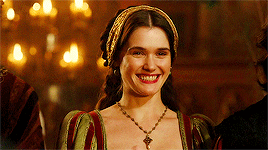



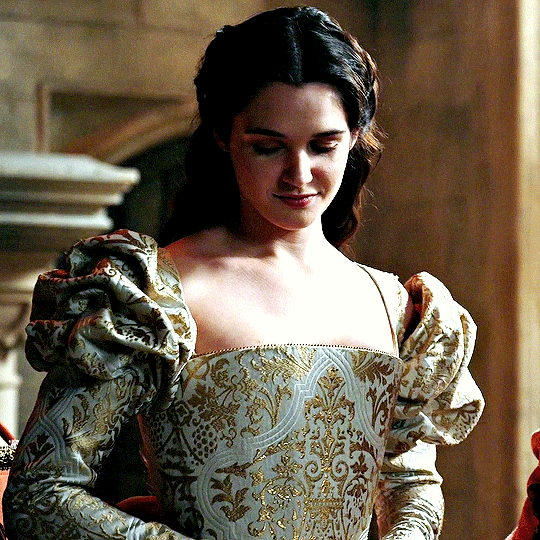
From Princess, to Queen, to Duchess
Mary Tudor (March, c. 1496; London, England - June, 1533; Suffolk, England) was an English princess, the third wife of King Louis XII of France and one of the two sisters of King Henry VIII. Mary was also the grandmother of Lady Jane Grey, who would become titular queen of England for nine days in 1553.
Mary’s father, King Henry VII, betrothed her to Archduke Charles —later Holy Roman Emperor, Charles V — in 1507. In 1514, however, political tribulations caused King Henry VIII to renounce such engagement and arrange a match between his beautiful, charming and yound sister and Louis XII, the sick and french monarch of 52. Since Mary was already in love with Charles Brandon, the first Duke of Suffolk, she made Henry promise that after Louis died she would be allowed to choose her next husband.
The marriage with the french king took place on Octouber of 1514, and Mary performed her role as wife and royal consort with kindness and dedication until he died on January of the following year. Before Henry or the new King of France, Francis I, could use her as a pawn in another political arrangement, Mary secretly wed Suffolk in Paris, probably in late February. Henry VIII was infuriated at the news, but eventually the pair regained the king’s favour, with Suffolk paying him a large sum of money and perhaps with the help and intercession of Cardinal Wolsey.Mary and Charles had four children, two daughters and two sons:
⇒ Henry Brandon (11 March 1516 – 1522);
⇒ Lady Frances Brandon (16 July 1517 – 20 November 1559), married to Henry Grey, 3rd Marquess of Dorset, and mother to Lady Jane Grey;
⇒ Lady Eleanor Brandon (1519 – 27 September 1547), married to Henry Clifford, 2nd Earl of Cumberland;
⇒ Henry Brandon, 1st Earl of Lincoln (c. 1523 – March 1534).
Mary had enjoyed unprecedented freedom during her teenage years at her brother's court. Just fourteen when her father, Henry VII died, she spent the next five years almost completely unchaperoned, encouraged to participate in every event, celebration and feast, each planned to display the opulence of the english royal family. She shared Henry's exuberance for spectacle and, for some time, was one of the central ladies of the court, admired and sociable. Like him, she loved dancing, masques, and parties; they were also very close, with the princess being the apple of the king's eye. It's rumored that Henry's famous warship, the Mary Rose, was named after both his favorite sister and his only daughter with Catherine of Aragon.
Upon her arrival in France, Mary was proclamed, by the Venetian Ambassador, to be "handsome and well favoured, grey-eyed; slight, rather than defective from corpulence, and conducts herself with so much grace, and has such good manners, that for her age of 18 years—and she does not look more—she is a paradise." She was particularly admired by her contemporaries for her long red hair, which she had inherited from the Plantagenet lineage through her mother, Elizabeth of York, who had also been an celebrated beauty.
After her second marriage, the Duchess of Suffolk lived a quiet life in the country, retired from court, although she had been know to have attended the famous Field of the Cloth of Gold at Guines, near Calais, in 1520. Often referred to as the French Queen, she was known to dislike Anne Boleyn and in defiance of her brother was to prove a firm supporter of her sister-in-law, Catherine of Aragon, in the matter of Henry VIII's annulment of his marriage to his first wife.
Mary visited London for the last time to celebrate the wedding of her eldest daughter, Lady Frances Brandon, to Henry Grey, Marquess of Dorset, in 1533. After suffering failing health for some years, Mary Tudor died on 25 June 1533 at the age of thirty-eight at Westhorpe Hall, Westhorpe, Suffolk, possibly of cancer. Henry VIII had requiem masses sung at Westminster Abbey for the repose of her soul and she was given a magnificent funeral, which her husband did not attend. Her body was interred at the Abbey of Bury St Edmunds. The Duke of Suffolk quickly remarried again, in that same year, to his fourteen-year-old ward, Katherine Willoughby (1519–1580), suo jure Baroness Willoughby de Eresby. Katherine had been betrothed to his eldest surviving son, Henry, Earl of Lincoln, but the boy was too young to marry, and Charles, to eager to add the heiress fourtune to his own.
#tudor dynasty#tudor queens#tudor history#tudor era#tudorqueens#the tudors#mary tudor#henry viii#elizabeth of york#charles brandon#tudor england#tudor period#tudor women#english royalty#house of tudor#medieval england#english history
33 notes
·
View notes
Text
April 18, 2024: Fourteen, Marie Howe
Fourteen
Marie Howe
She is still mine—for another year or so—
but she’s already looking past me
through the funeral-home door
to where the boys have gathered in their dark suits.
--
Also:
Hurry, Marie Howe
Walking Home, Marie Howe
A Little Tooth, Thomas Lux
Today in:
2023: I wanted to be surprised., Jane Hirshfield
2022: Short Talk on Waterproofing, Anne Carson
2021: Cindy Comes To Hear Me Read, Jill McDonough
2020: from This Magic Moment, David Kirby
2019: Poem In Which I Become Wolverine, José Olivarez
2018: In the Beginning God Said Light, Mary Szybist
2017: from Contradictions: Tracking Poems, Adrienne Rich
2016: I Said Yes but I Meant No, Dean Young
2015: Cardinal Cardinal, Stephen Dunn
2014: Ezra Pound’s Proposition, Robert Hass
2013: Wistful sounds like a brand of air freshener, Bob Hicok
2012: Not Getting Closer, Jack Gilbert
2011: Written in Pencil in the Sealed Railway-Car, Dan Pagis
2010: The Moss of His Skin, Anne Sexton
2009: It’s This Way, Nazim Hikmet
2008: The Problem With Skin, Aimee Nezhukumatathil
2007: Serenade, Terrance Hayes
2006: The Old Liberators, Robert Hedin
2005: Morning Song, Sylvia Plath
13 notes
·
View notes
Text
pfw s/s 2o24 schedule~
25 sept: marie adam-leenaerdt, weinsanto, benjamin benmoyal, vaquera, mossi, pierre cardin
26 sept: barbara bui, peter do, niccolo pasqualetti, cfcl, victoria/tomas, mame kurogouchi, christian dior, dawei, florentina leitner, anrealage, pressiat, germanier, heliot emil, saint laurent
27 sept: courrèges, reverie by caroline hu, the row, marni, minuit, dries van noten, kimhekim, cecilie bahnsen, litkovska, undercover, didu, acne studios, balmain
28 sept: uma wang, veronique leroy, lanvin, paco rabanne, gauchere, chloé, givenchy, nehera, christopher esber, rick owens, schiaparelli, isabel marant
29 sept: alexis mabille, alexandre vauthier, leonard paris, loewe, maitrepierre, issey miyake, jitrois, giambattista valli, lutz huelle, nina ricci, enfants riches déprimés, victoria beckham, situationist, yohji yamamoto, coperni
3o sept: junya watanabe, carven, rui, noir kei ninomiya, vivienne westwood, ruohan, hermès, paloma wool, elie saab, comme des garçons, boyarovskaya, alexander mcqueen, ann demeulemeester
o1 oct: margaret howell, dice kayek, ottolinger, akris, valentino, quira, casablanca, atlein, y/project
o2 oct: ungaro, stella mccartney, az factory, paula canovas del vas, agnes b., zimmermann, shiatzy chen, louis vuitton, anne isabella, sacai, rokh, mugler, maison margiela
o3 oct: chanel, christian wijnants, ujoh, xuly.bët, kiko kostadinov, anna october, miu miu, aigle, avellano, meryll rogge, duran lantink
40 notes
·
View notes
Text
ROUND 2 MASTERLIST
I apologize for the wait
Here are the round 2 matchups


SIDE ONE
Sharpay Evans (High School Musical) Vs. Queen (deltarune)
Reko Yabusame (Your Turn To Die -Death Game By Majority-) Vs. Sunset Shimmer (My Little Pony: Equestria Girls)
Megaera (Hades) Vs. Agent 8 (Splatoon 2: Octo Expansion)
Amy Rose (Sonic the Hedgehog CD) Vs. Maya Fey (Phoenix Wright: Ace Attorney)
Morganthe (Wizard 101) Vs. The Administrator (Team Fortress 2)
Audria Rose (Descendants) Vs. Motoko Kusanagi (Ghost in the Shell)
Toriel (UNDERTALE) Vs. Aspheera (Ninjago)
Sara Chidouin (Your Turn To Die -Death Game By Majority-) Vs. Callie (Splatoon)
Marina (Splatoon 2) Vs. Jolyne Cujoh (Jojo’s Bizarre Adventure)
Ema Skye (Phoenix Wright: Ace Attorney) Vs. Daisy (Super Mario Land)
Nyota Uhura (Star Trek) Vs. Regina George (Mean Girls)
Olivier Mira Armstrong (Fullmetal Alchemist) Vs. Lady Iron Fan (Monkie Kid)
Hornet (Hollow Night) Vs. Franziska von Karma (Phoenix Wright: Ace Attorney - Justice for All)
Eleanor Shellstrop (The Good Place) Vs. Buffy Anne Summers (Buffy the Vampire Slayer)
Gertrude Robinson (The Magnus Archives) Vs. April O’Neil (ROTTMNT)
Princess Carolyn (Bojack Horseman) Vs. Madoka Kaname (Puella Magi Madoka Magica)
Reagan Ridley (Inside Job) Vs. P.I.X.A.L (Ninjago)
Monika (Doki Doki Literature Club) Vs. Korra (The Legend of Korra)
Bulma (Dragon Ball) Vs. Lady Macbeth (Macbeth)
Susie (deltarune) Vs. Fairy Godmother (Shrek 2)
Rumi Usagiyama (My Hero Academia) Vs. Lauren Mallard (Welcome to Night Vale)
Bayonetta (Bayonetta) Vs. Azula (Avatar: The Last Airbender)
Frye (Splatoon 3) Vs. Ann Takamaki (Persona 5)
GLaDOS (Portal) Vs. Kyoko Sakura (Puella Magi Madoka Magica)
Marina (OMORI) Vs. Clawdeen Wolf (Monster High)
Alcina Dimitrescu (Resident Evil) Vs. Miss Piggy (The Muppets)
Lord Dominator (Wander Over Yonder) & Homura Akemi (Puella Magi Madoka Magica) Vs. Aradia Megido (Homestuck)
Dahlia Hawthorne (Phoenix Wright: Ace Attorney - Trials and Tribulations) Vs. Lucina (Fire Emblem)
Marie (Splatoon) Vs. Toph Beifong (Avatar: The Last Airbender)

SIDE TWO
Hatsune Miku (Vocaloid) Vs. Solar Flare (Plants vs. Zombies)
Mia Fey (Phoenix Wright: Ace Attorney) Vs. Agent 3 (Splatoon)
Isabelle (Animal Crossing: New Leaf) Vs. Tabitha Chrysanthemum Scarlet (Scarlet Hollow)
Astrid Hofferson (How To Train Your Dragon) Vs. Athena Cykes (Phoenix Wright: Ace Attorney - Dual Destinies)
Rapunzel (Tangled) Vs. Nami (One Piece)
Nadja (What We Do in the Shadows) Vs. Bridget (Guilty Gear)
Vriska Serket (Homestuck) Vs. Yosano Akiko (Bungo Stray Dogs)
Celestia Ludenberg (Danganronpa: Trigger Happy Havoc) Vs. Helen Richardson (The Magnus Archives)
Akane Kurushiki (Zero Escape: 9 Hours 9 Persons 9 Doors) Vs. Clementine (Stray)
Nancy Wheeler (Stranger Things) Vs. Annabeth Chase (Heroes of Olympus)
Jinx (League of Legends/The Arcana) Vs. Lotus (Zero Escape: 9 Hours 9 Persons 9 Doors)
Yang Xiao Long (RWBY) Vs. Kitty Softpaws (Puss and Boots)
Boss (AI: The Somnium Files) Vs. Coco Adel (RWBY)
Harumi (Ninjago) Vs. Lady with an Ermine (Leonardo da Vinci)
Edalyn Clawthorne (The Owl House) Vs. Darling Charming (Ever After High)
Pearl (Splatoon 2) Vs. Carmelita Montoya Fox (Sly Cooper)
Vex’ahlia (Critical Role) Vs. Queen (Chess)
Lup (The Adventure Zone) Vs. Sweetheart (OMORI)
Sister Beatrice (Warrior Nun) Vs. Katara (Avatar: The Last Airbender)
Samus Aran (Metroid) Vs. Clover (Zero Escape: 9 Hours 9 Persons 9 Doors)
Jessie (Pokémon) Vs. Fiona (Shrek)
Dana Cardinal (Welcome to Night Vale) Vs. Rose Lalonde (Homestuck)
Nadia Vulvokov (Russian Doll) Vs. Lucille Sharpe (Crimson Peak)
Undyne (UNDERTALE) Vs. Ryūko Matoi (Kill la Kill)
Mari (OMORI) Vs. Rosalina (Super Mario Galaxy)
Weiss Schnee (RWBY) Vs. Elizabert Megafig (Bugsnax)
Cleo de Nile (Monster High) Vs. Skylor Chen (Ninjago)
Barbie (Barbie) Vs. Cynthia (Pokémon Diamond/Pearl)
109 notes
·
View notes
Text
The dangers of disgrace- Can you save the family patrimony ?
Royal favour was so actively cultivated because political credit opened the doors to the further accumulation of wealth and even those well beyond the comparatively narrow confines of the court received pensions or other marks of distinction which meant that disgrace could have serious financial consequences. By the seventeenth century, France was governed by the rule of law in as much that life and property were not subject to royal whim. Rather than justice being exercised by the monarch personally, authority was delegated to courts and other individuals or institutions even if it was always subject to evocation should the need arise. Shocking exceptions such as the assassinations of the Guise or of Concini on the orders of Henri III and Louis XIII respectively were, it is true, covered by the flimsiest of legal fig leaves, thereafter trials of one form or another had been held for many of those who had fallen into the profoundest disgrace. For all of their theoretical power, Bourbon kings saw themselves as absolute monarchs not tyrants or despots, and property or offices were rarely confiscated in the manner of Russian tsars or Ottoman sultans. Yet if this offered French elites some degree of security, disgrace could still leave the family patrimony highly vulnerable.
Both the duc de Montmorency in 1632 and the Grand Condé in 1653 were condemned for the crime of lese-majesty after taking up arms against the crown and the potential consequences for their family patrimonies were nothing short of catastrophic. Before his execution, the rebel duc was declared "deprived of all rank, honours, and offices, the duchy of Montmorency extinguished and reunited to our crown and all of his other estates, seigneuries, properties, and goods, confiscated in our name." Condé fared no better and he was deprived of his "honours and governorships" by a royal declaration of November 1652 and dispossessed of "all his houses, lands, and properties to the profit of the king" by an arrêt of the Parlement of Paris in March 1654. If such draconian sentences could be handed down to two of the most prestigious men in the kingdom, it is easy to imagine the potential vulnerability of those lower down the social hierarchy, and when faced by harsh public and legal condemnation saving the family fortune was no easy task.
Guilty of lese-majesty, and with Richelieu determined to make an example, Montmorency lost his head and any right to influence the future destination of his patrimony. Yet rather than bolster the royal domain, Louis XIII respected the wishes of the rebel's father, who before his own death had planned to divide his inheritance amongst his three daughters should his son die without heir. By this route, a substantial portion of the vast Montmorency inheritance had passed to the Bourbon-Condé via Charlotte-Marguerite de Montmorency, wife of the prince de Condé. It was their son, the great military captain, who had by his own treason during the Fronde endangered that inheritance and much else besides. Moreover, unlike the duc in 1632, he had not expiated his crimes on the block and was instead fighting in Spanish service against Louis XIV's armies in Flanders while his brother, Conti, and most of his relatives and clients were suspect having participated in one way or another in his revolt. There was, therefore, a genuine danger that the family patrimony would be broken up or lost.

The House of Bourbon-Condé rose to the challenge. The task of safeguarding the family fortune was rendered possible in large measure because the judgement confiscating Condé's possessions was issued in absentia and despite its draconian terms it left the door "open for repentance" and allowed five years for an appeal to be lodged. That delay bought valuable time, even if the presence of the notoriously avaricious Mazarin waiting in the wings was a warning that it might not be enough. In response, the princely House and its entourage was mobilized and it promptly began to squirrel away jewels, furniture, works of art, and other valuables, literally stripping châteaux and hôtels and hiding anything of value away from the prying eyes of its enemies. Legal manoeuvres allowed the family to open up another front as almost everyone from the prince de Conti to household servants took the opportunity to make a legal claim against the absent Condé's estate. Having made his peace with the cardinal, Conti cemented his new found favour by marrying Marie-Anne Martinozzi, one of Mazarin's nieces. While hardly a prestigious match, the political advantages were all too tangible as he could now stake a claim to the offices and titles forfeited by his brother. By these and other means, the Condé fortune was saved from rapine and when, in 1660, the prince was permitted to re-enter the kingdom disaster had been averted. His rehabilitation, which had been negotiated as part of the Peace of the Pyrénées concluding the long war with Spain, was a rare example of political disgrace being ended by diplomatic treaty. It would, however, take several years before the damage to Condé's political and financial credit had been repaired, and he was once more trusted to serve at the head of Louis XIV's armies.
Julian Swann- Exile, Inprisonment or Death- The Politics of Disgrace in Bourbon France
#xvii#julian swann#exile inprisonment or death: the politics of disgrace in bourbon france#henri i de guise#concino concini#henri iii#louis xiii#henri ii de montmorency#louis ii de bourbon condé#le grand condé#charlotte-marguerite de montmorency#cardinal de richelieu#louis xiv#armand de bourbon conti#marie-anne martinozzi#cardinal mazarin#treaty of the pyrénées
3 notes
·
View notes
Text
Main X-Men and Brotherhood Members Avian Species (Part of the 🪶Avian AU):
(P.S.: Keep in mind this is just for fun.. Part of it is matching them to a fitting bird species, part of it is color-matching, and part of it is just personal opinion. Enjoy💛🧡😊)
The X-Men:
• Charles Xavier/Professor X: Cockatiel
• Ororo Munroe/Storm: Grey Crowned Crane
• Logan Howlett/Wolverine: Greater Spotted Eagle
• Hank McCoy/Beast: Great Horned Owl
• Anne-Marie/Rogue: Ruby-throated Hummingbird
• Remy LeBeau/Gambit: Cardinal
• Scott Summers/Cyclops: Blue Tit
• Jean Grey/Phoenix: Sun Parakeet
• Jubilation Lee/Jubilee: American Goldfinch
• Kurt Wagner/Nightcrawler: Indigo Bunting
• Kitty Pryde/Shadowcat: Western Bluebird
The Brotherhood:
• Erik Lehnsherr/Magneto: Gyrfalcon
• Raven Darkholme/Mystique: Magpie
• Victor Creed/Sabretooth: Golden Eagle
• Pietro Maximoff/Quicksilver: Merlin
• Wanda Maximoff/Scarlet Witch: Eurasian Hobby
• Fred Dukes/Blob: Turkey
• Lance Alvers/Avalanche: Hairy Woodpecker
• St. John Allerdyce/Pyro: Baltimore Oriole
• Mortymer Tonybee/Todd Tolansky/Toad: Malard Duck
Avian Options For The Reader:
• Barn Owl
• Kinglet
• Swan
• Common Grackle
• Bluejay
• Common Redpoll
• Northern Saw-whet Owl
• Mourning Dove
• Cooper's Hawk
• Peacock
#honeycomb thoughts#platonic yandere marvel#yandere platonic marvel#platonic yandere marvel x reader#platonic yandere xmen#yandere x-men#platonic yandere#platonic yandere x reader#🪶Avian AU
20 notes
·
View notes
Text
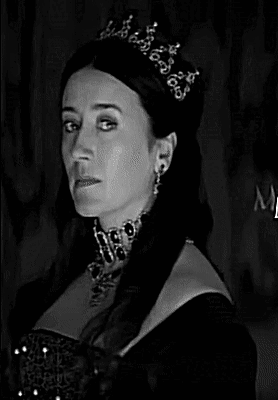
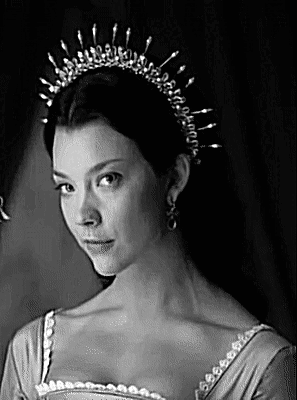

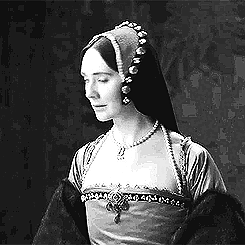
Katherine of Aragon and Anne Boleyn
Part One
Two women destined to be rivals in love, in power and in religion. One is the daughter of royalty, destined to become Queen of England since she was a baby. Her first husband died suddenly, and she married her brother-in-law, the young King Henry VIII. The other woman is the daughter of a family on the rise at court. She has been educated in courts abroad but has returned to her native England to serve the Queen of England.
Katherine of Aragon, a beloved Queen by English people, had "failed" to give Henry VIII a son. The royal couple had a pretty and intelligent daughter named Mary. Knew her duty, Katherine was to keep silent and look the other way when Henry took a mistress, which she did. The young Anne Boleyn was the sister of the King's mistress, and she quickly established herself as one of the most stylish and accomplished women at the court. George Cavendish, Wolsey’s servant and biographer, has argued that Henry VIII was "casting amorous eyes" towards Anne as early as 1523.

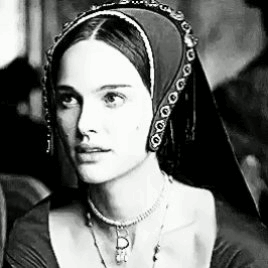
In 1523, Anne Boleyn's life revolved around her duties within the Queen's household. Katherine liked to surround herself with attractive young women, often to her own detriment, and was a benevolent mistress to those who served her, never failing in courtesy towards them, and taking an almost maternal interest in their lives. Young men were made welcome in the Queen's apartments, and there were plenty of opportunities for flirtation. Anne had attracted a number of suitors, and one young man who was smitten with her charms was Henry Percy, the 21-year-old heir to the earldom of Northumberland. Percy was the Cardinal Wolsey's servitor at table; whenever Wolsey went to court, Percy would go with him, but as soon as he had been excused from his duties, he would resort to the Queen's apartments, there to chat and flirt with the maids of honour. Thus he had met Anne Boleyn, and before very long he had eyes for no one else.
According to Cavendish, Anne’s burgeoning romance with Percy was stifled by Wolsey, acting upon Henry’s instructions because the king confessed to his loyal cardinal that he had a “secret affection” for the lady himself. Anne was sent away from court in disgrace to Hever. She spent her time idly waiting for a summons back to court and the signal that she had been forgiven. By late 1525 or early 1526 Anne Boleyn was back in the household of Queen Katherine. Henry VIII’s affair with Anne’s sister, Mary, had ended some time before 1526. He was therefore looking for a new mistress during the early months of that year when he first noticed the object of his friend, Thomas Wyatt’s, affections. Wyatt may not, at first, have realised how serious the king’s feelings were and he attempted to compete with the king for Anne. Wyatt was sent away for a time to ensure that the way was clear for the king to make his advances.


Since Henry could not marry her Anne probably enjoyed a mild flirtation with him but, ultimately, stopped short of agreeing to become his mistress. Henry, who was used to women surrendering the instant he beckoned, was intrigued. It was new for him to be placed in the position of having to beg for sexual favours; far from being angry or irritated, he was captivated, and Anne at once became infinitely more desirable. According to Anne's biographer, George Wyatt, Queen Katherine tried to protect her maid of honour from the monarch’s amorous advances and Anne remained loyal to her queen: "how could I injure a princess of such great virtue?". Anne resisted Henry for over a year, frequently absenting herself from court and his presence. He cajoled and pleaded. He made promises and gave gifts. Above all, he wrote letters. Anne’s feelings were in turmoil following the king’s offer of marriage and she expressed this fact in a gift she sent to Henry along with her acceptance.
In May 1527 Henry initiated annulment proceedings to rid himself of the ageing Queen Katherine. He wanted a declaration that his marriage to Katherine was invalid. This would mean not only that Henry was unmarried in 1527 but that he had never been married in 1509. According to this line of argument, therefore, Katherine’s status was once more that of the widow of his brother Arthur – the Princess Dowager of Wales – and princess Mary a bastard. For Katherine, then, it was as though the Crusades were on her own doorstep. The “secret matter” started of for the queen as a straightforward struggle to make Henry overcome his unfounded scruples of conscience and return to her as her God-given husband, but it escalated over the years into a battle not just for herself and her daughter but for the preservation of nothing less than her “Holy Catholic Faith” itself.
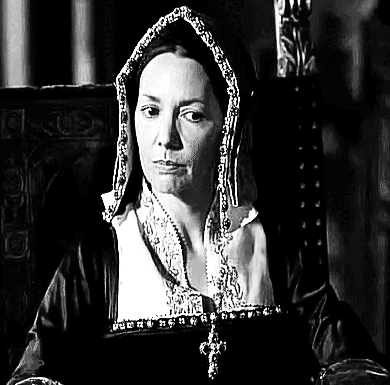
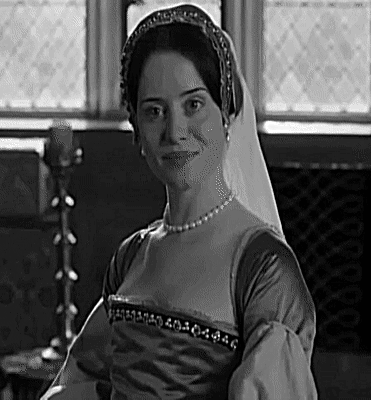
In 1528, Henry housed both women together under the same roof at Greenwich. Henry began showering Anne with fine jewellery and clothes, and saw that she was lodged in splendid apartments close to that of the King. The courtiers made much of her, using her as an intermediary between themselves and the King, and she was soon revelling in her growing influence and power. To confuse things further, both Katherine and Henry still felt obliged to behave in public as if nothing untoward was happening. It seems that the queen went out of her way to meet Anne and Henry, singly and together, using her presence in an attempt to divide, or at least chaperone them. George Wyatt also talks of card games that Katherine instigated with Anne, in an apparent attempt to make Anne show her deformed finger (if you believe she had one!), and Katherine’s famous remark to Anne: "My lady Anne, you have good hap to stop at a king, but you are not like others, you will have all or none”. On the other hand, Katherine behaved impeccably, never showing any spark or kind of grudge or displeasure. According to George Cavendish, Queen Katherine showed Anne special tenderness:
Notwithstanding, she showed neither to Mistress Anne nor unto the king, any spark or kind of grudge or displeasure, but took and accepted all things in good part, and with wisdom and great patience dissimulated the same. She held Mistress Anne in more estimation for the king’s sake than she had before.
Perhaps Katherine decided it was safest to keep her enemy close and that her presence would prove restrictive to the pair, preventing them achieving greater intimacy or plotting her downfall behind her back. Also, she would have maintained that as England’s anointed queen of eighteen years, it was her right and her duty to be visible at court, in the palaces she had been inhabiting for so long, accessible to the people and served at table according to her due. She may have hoped that her presence would be enough to provoke Anne to shame or drive her away. Anne must have found the proximity to her rival oppressive and she often spent time at Hever in the early years of the divorce proceedings.
The Boleyn family received honours from the king. Sir Thomas Boleyn became Earl of Wiltshire and Ormonde; Anne's brother George received the title of Viscount Rochford, while she herself was in future to be known as the Lady Anne Rochford. At a state banquet held to mark the occasion, Anne took precedence over all the ladies present (who did not include Queen Katherine) and was given the place of honour at the King's side. 'The very place allotted to a crowned Queen', wrote the Emperor's ambassador indignantly. Henry was giving Anne every honour he could, every mark of respect – she was being openly treated as if she were already queen. Anne was given her own court, which rivalled the queen’s. Greater court, noted the French ambassador, was being paid to her every day ‘than has been paid to the Queen for a long time’. Henry was determined to show that he was deeply committed to marrying Anne. "kissing her and treating her in public as though she were his wife" according to the papal legate, Cardinal Campeggio.
Sources:
Licence, Amy. Anne Boleyn: Adultery, Heresy , Desire
Weir, Alison. The Six Wives of Henry VIII
Fox, Julia. Sister queens : the noble, tragic lives of Katherine of Aragon and Juana, Queen of Castile
Tremlett, Giles. Catherine of Aragon: Henry’s Spanish Queen
Fraser, Antonia. The Six Wives of Henry VIII
#catherine of aragon#katherine of aragon#catalina de aragon#henry viii#catalina de aragón#anne boleyn
34 notes
·
View notes
Text
Ils parlent de la mode
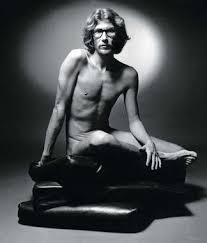
Yves Saint-Laurent par Jeanloup Sieff, 1971
1. « La mode passe, le style reste » - Yves Saint-Laurent
2. « Etre un pas en avance sur la tendance de la mode n’est pas si important pour moi. Ce qui compte, c’est toujours aller de l’avant » - Sonia Rykiel
3. « Si tu ne peux pas être mieux que la concurrence, il suffit de t’habiller mieux » - Anna Wintour
4. « Ce n’est pas la robe que vous portez qui compte, mais la vie que vous menez en la portant » - Diana Vreelan
5. « La plus grande élégance, c’est la vérité » - Thierry Mugler

Giorgio Armani
6. « L’élégance ce n’est pas se démarquer, mais être mémorable » - Giorgio Armani
7. « Les femmes nulles suivent la mode, les prétentieuses l’exagèrent, mais les femmes de goût pactisent agréablement avec elle » - Marquise du Châtelet
8. « Les vêtements que je préfère sont ceux que j’invente pour une vie qui n’existe pas encore, le monde de demain » - Pierre Cardin
9. « Vaines bagatelles qu’ils semblent être, les vêtements ont, disent-ils, un destin plus important que de nous tenir chaud. Ils changent notre vision du monde et le point de vue du monde sur nous » - Virginia Woolf
10. « La mode me dépasse. Mon imaginaire dépasse les limites normales et m’entraîne où je ne voudrais pas aller » - Yves Saint-Laurent

Jane Birkin
11. « Mon style est comme un cocktail. Je ne suis pas aussi apprêtée qu’une française mais je m’en fiche comme une anglaise » - Jane Birkin
12. « La mode est avant tout un art du changement » - John Galliano
13. « La chose la plus difficile dans la mode n’est pas d’être connu pour un logo, mais d’être connu pour une silhouette » - Giambattista Valli
14. « Donne à une fille les bonnes chaussures et elle peut conquérir le monde » - Marylin Monroe
15. « Pour être irremplaçable, il faut être différente » - Coco Chanel
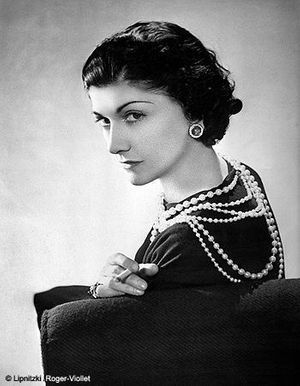
Coco Chanel
16. « On est jamais trop, ni pas assez habillé avec une Petite Robe Noire» - Karl Lagerfeld
17. « La mode n’est pas quelque chose qui existe uniquement dans les vêtements. La mode est dans l’air, portée par le vent. On la devine. La mode est dans le ciel, dans la rue. » - Coco Chanel
18. « L’élégance est la seule beauté qui ne se fane jamais » - Audrey Hepburn
19. « J’aime être une femme, même dans un monde d’hommes. Après tout, les hommes ne peuvent pas porter de robes, mais nous pouvons porter des pantalons » - Whitney Houston
20. « J’aime mon argent quand il est là où je peux le voir : sur des cintres, dans mon armoire » - Carrie Bradshaw

Carrie Bradshaw dans Sex & The City
21. « La femme à la mode porte le vêtement. Ce n’est pas le vêtement qui la porte » - Mary Quant
22. « Les femmes s'habillent pour elles-mêmes. Si elles s'habillaient pour les hommes, elles seraient tout le temps nues » - Betsey Johnson
23. « La mode est ce que vous offrent les créateurs quatre fois par an. Le style est ce que vous choisissez » - Lauren Hutton
24. « La différence entre le style et la mode est la qualité » - Giorgio Armani
25. « Ne soyez pas dans les tendances. Ne laissez pas la mode s’emparer de vous, mais décidez de ce que vous êtes, de ce que voulez exprimer par ce que vous portez et de la façon dont vous vivez » - Gianni Versace

Gianni et Donatella Versace
26. « La mode doit être une forme d’échappatoire, et non une forme d’emprisonnement » - Alexander McQueen
27. « La moitié de mes créations sont de la fantaisie contrôlée, 15 % de la folie pure, et le reste du terre-à-terre » - Manolo Blahnik
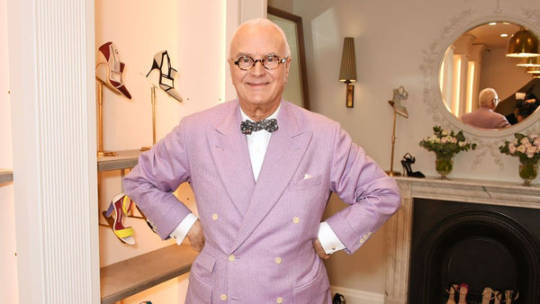
28. « La seule vraie élégance est dans l’esprit; si vous avez ça, le reste vient vraiment de ça » -Diana Vreeland
29. « Je ne crée par des vêtements, je crée des rêves » - Ralph Lauren
30. « Au fil des années j’ai appris que ce qui est important dans une robe, c’est la femme qui la porte » - Yves Saint Laurent
31. « Les hommes me disent que j’ai sauvé leur mariage. Cela leur coûte une fortune en chaussures, mais moins cher qu’un divorce » - Manolo Blahnik
32. « Les vêtements ne vont pas changer le monde, les femmes qui les portent, si » - Anne Klein
33. « Quand vous doutez, portez du rouge » - Bill Blass
34. « La mode est un langage de l’instant » - Miuccia Prada
35. « J’adore et j’admire tous ceux qui sont différents. J’aime ça. Le jet set est banal. Le bon goût est banal. L’excentricité est chic. Le bon goût paralyse. Mais la mode du punk ou de la rue ou un corps couvert de tatouage c’est intéressant pour moi et j’adore » - Jean-Paul Gaultier

36. « Ne jamais dire jamais – dans la mode et dans la vie » - Ashley Olsen
37. « La seule raison pour laquelle je suis dans la mode est de détruire le mot conformité » - Vivienne Westwood
38. « Il n’y a pas de mode si elle ne descend pas dans la rue » - Coco Chanel
39. «L’élégance est une question de personnalité plus que de vêtements » - Jean-Paul Gaultier
40. «Une belle robe, c’est une comédienne qui parle juste » - Sonia Rykiel
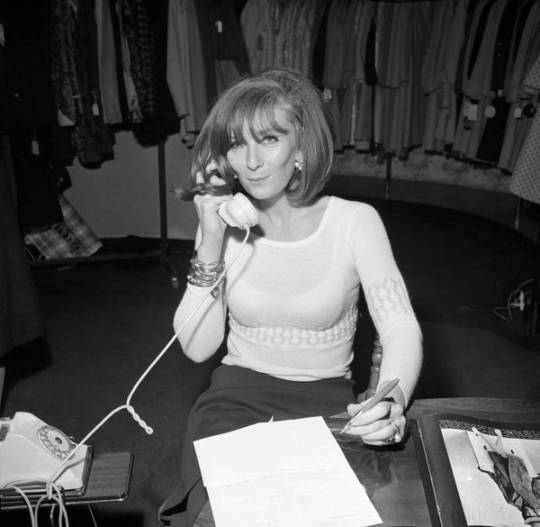
41. « La mode se démode, l’allure est intemporelle » - Coco Chanel
42. « Les gens de la mode n’aiment que ce qu’ils ne comprennent pas. Alors il suffit de faire un truc incompréhensible et ils t’adorent » - Loïc Prigent
43. « La mode est ce que l'on porte. Ce qui est démodé, c'est ce que portent les autres » - Oscar Wilde
44. « Le style est une manière de dire qui vous êtes sans parler » - Rachel Zoe
45. « Le style sait qui vous êtes, ce que vous voulez dire, et ce dont vous vous fichez » - Orson Wells
46. « Effacez le négatif, accentuez le positif. » - Donna Karan
47. « C’est l’attitude qui fait tout. » - Diane von Furstenberg

48. « Une femme doit être deux choses : classe et fabuleuse. » - Coco Chanel
49. « La mode est ce que vous offrent les créateurs quatre fois par an. Le style est ce que vous choisissez. » - Lauren Hutton
50. « La simplicité est l’ultime sophistication » - Léonard de Vinci
10 notes
·
View notes